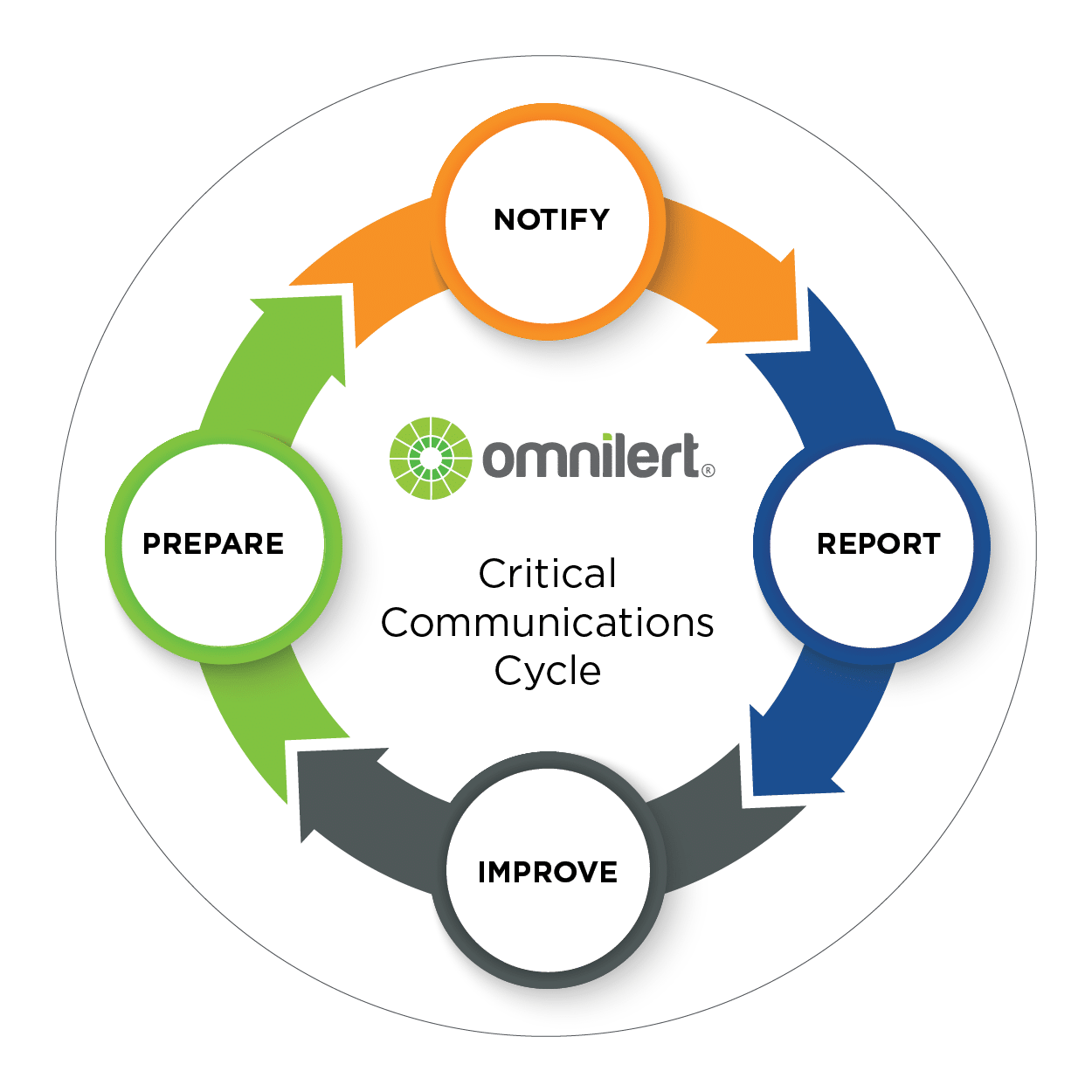Communicating with the masses has been a fundamental challenge humans have grappled with since the dawn of existence. As time progressed, the ingenuity of man yielded advancements in the ability to communicate with his tribes, villages, and communities.
Advancements in technology create opportunities for improved communication as long as the technology is properly incorporated in a well-prepared program. Establishing what role communications will play in your emergency response for each part of an incident is a prerequisite for a well-prepared program.
The Critical Communications Cycle is the blueprint that maps each phase of incident communications with the associated actions required for each phase. There are distinct aspects of preparation, before an incident, that all need to be addressed. It is essential to notify people via multiple modalities during the first minute of an incident. It is also very important to continue collaborating and monitoring during the incident. After every incident, it is important to review the response and look for ways to improve.
The Critical Communications Cycle addresses the three parts of an incident – the Before, the During, and the After – to help you have an organized approach to emergency notification.
Before – Prepare
Proper planning and preparation before an incident ensures a concise response that helps manage the adrenaline and stress that inevitably accompany an emergency. This is the most important part of the Critical Communications Cycle.
During – Notify
When an emergency strikes, emotions are high and sometimes you may not remember what to do or say. Without having proper preparations in place ahead of time, risk increases and you are exposed to a possible decreased success rate in regards to proper emergency response. Notification, mobilization, and collaboration will suffer.
After – Report & Improve
The emergency has concluded, and it’s time for debriefings and getting things back in working order. When the incident has been resolved, there will be data and practical experiences that can be reviewed to improve the crisis communications plan and response for the future.
To dive a bit deeper into every aspect of the Critical Communications Cycle and learn more best practices to prepare your organization for an emergency, please access the Critical Communications Cycle infographic.



